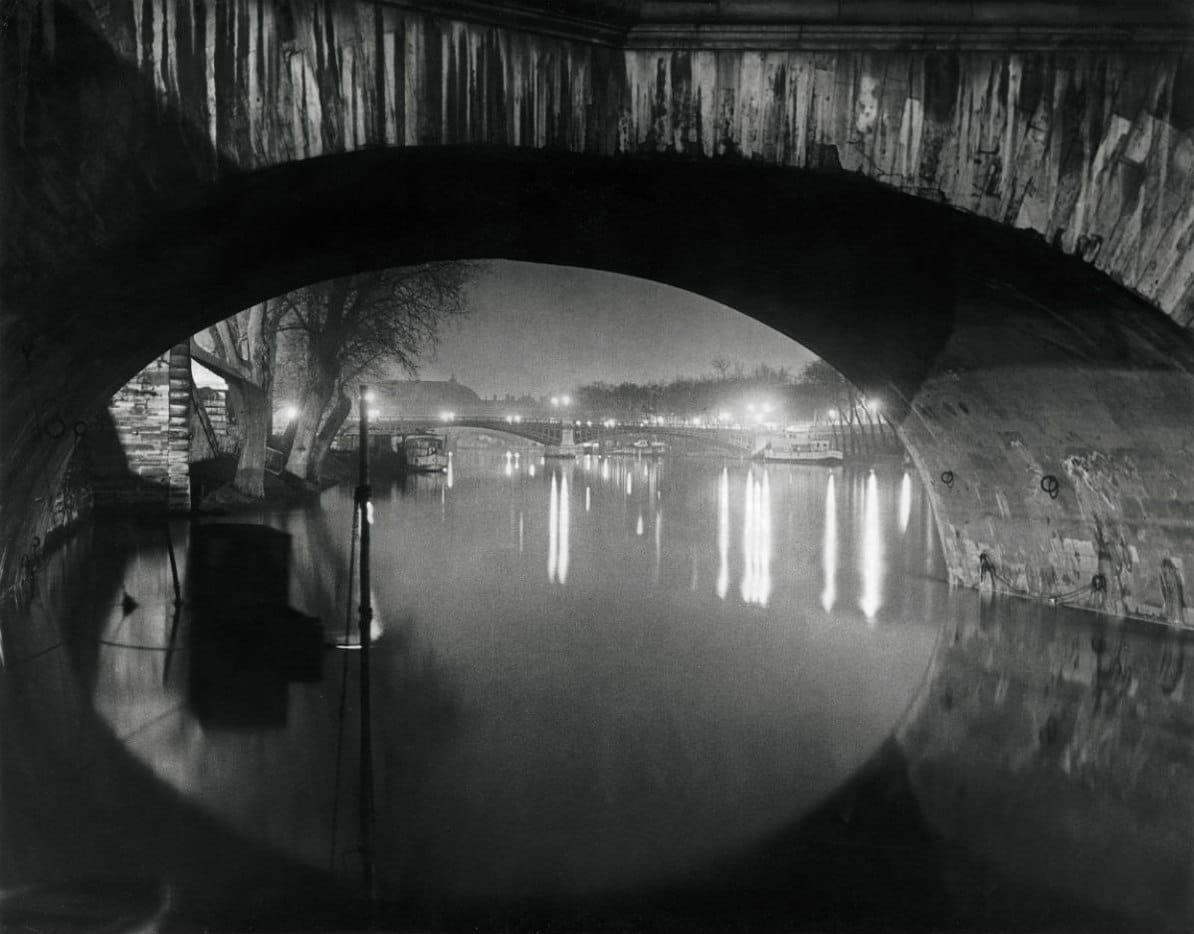Brassaï
FEB.20.2018 ──────── SEP.02.2018

Brassaï
View through the pont Royal toward the pont Solférino, c. 1933
Estate Brassaï Succession, Paris
© Estate Brassaï Succession, Paris
Exhibition
FEB.20.2018 ── SEP.02.2018
Location
Recoletos Exhibition Hall
Paseo Recoletos 23, 28004 Madrid
Casa Garriga Nogués
Diputació, 250. 08007 Barcelona
Brassaï’s work, already famous by the start of the 1950s, has come to be recognized as one of the cornerstones of the birth and evolution of a new trend in photography which emerged between the two world wars, transcending its purely documentary nature and restoring the concept of photography as a creative medium.
This is the first retrospective of the work of this great master organized since the year 2000 (Centre Pompidou) and the first to take place in Spain since 1993. The exhibition has been made possible thanks to loans from some of the leading European and American institutions and private collections: Estate Brassaï Succession (Paris), Centre Pompidou (Paris), Museum of Modern Art (New York), Metropolitan Museum of Art (New York), Museum of Fine Arts (Houston), Philadelphia Museum of Art, Art Institute of Chicago, ISelf Collection (London), San Francisco Museum of Modern Art, Nicholas and Susan Pritzker, David Dechman and Michel Mercure.
Brassaï is a Fundación MAPFRE production.
After studying art in Budapest and Berlin, Brassaï moved to Paris in 1924. In 1949 he took French nationality and never returned to his native country.
He was immediately enthralled by the city; the artists and writers of Montparnasse, but also the crooks, prostitutes, pimps and other characters that made up the Parisian underworld all contributed to his being immediately captivated by the fabric of the French capital. Its everyday life, its appearance and its vitality… soon made it the focus of the intense activity he maintained throughout the thirties.
Nobody photographed Paris by night as exhaustively and accurately as Brassaï, although he also accumulated a substantial collection of images of Paris by day. But, in all cases, these creations always fulfilled the same objective: to capture the best possible reflections of what, for him, represented an enduring tradition, developed in a continuous and uninterrupted way, unchanging from generation to generation.
Night
His book Paris de Nuit, published in December 1932, soon enjoyed great success despite not including many of his best nocturnal shots, which would be taken or published later.
When, following the Second World War, Brassaï reorganized his work into themed groups, he collected all of his scenes of Parisian nightlife together under the title Plaisirs (Pleasures).
The world they so vividly expressed was both a reality and a sophisticated myth. The characters featured are generally just going about their business and yet, even so, Brassaï’s work is not documentary in nature: his goal and lasting achievement was to revitalize a rich mythology that already existed in literature and the traditional visual arts, translating it to the new medium of photography in its most visceral and immediate form.
The Arts
Although Brassaï settled in Paris to devote himself to painting, he very quickly started to generate sporadic income by selling articles, caricatures and photographs to German and Hungarian newspapers. The possibilities that these commissions opened up for him, together with his fascination for life beyond the studio, ensured that, from his very first years, he would, up to a point, neglect his main objective.
So it was that at the start of the 1930s he discovered his great and unique talent for photography, a medium he had previously disdained. He then decided to keep his real name for his paintings and sign his photographs as “Brassaï”, in other words «by Brassó».
During the German occupation of Paris he gave up photography and went back to drawing and writing. Just like the majority of the drawings preserved from his time in Berlin from 1921-1922 as an art student, most of his output during and just after the German occupation of 1943-1945 are female nudes. The same thing happened with many of the sculptures he began work on after the war.
When the war was over he returned to photography, although his love affair with Paris by night had ended. However, he still kept to the style that he had forged in the 1930s: direct, frank and committed to the bare facts.
Illustrated press
When Brassaï arrived in Paris, in the middle of the 1920s, the process of substituting traditional illustrations for photographs in newspapers and magazines was already in full swing. Brassaï’s work on their behalf led him to improvise, at the beginning, a photographic agency of which he was the only employee. He provided the media with photographs taken by others. Gradually, as he began to understand the potential of this phenomenon, Brassaï started to take and sell his own photographs and to achieve widespread recognition for them.
At the same time, this process coincided with an incipient trend in photography: contrary to the photographers with artistic leanings at the start of the century, who emulated traditional art, the leaders of the new movement discovered the artistic potential of photographing everyday life.
When this tradition began to be celebrated in the seventies, Brassaï’s work was recognized as one of the cornerstones of its emergence and evolution.
Coming soon




